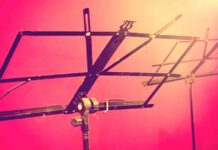Journalism student Sara Hameed reports on the Polish pavilion at EXPO 2020
By Sara Hameed
SHARJAH – The Polish Table can convert sound into light through a voice-activated feature at the Expo 2020’s Poland pavilion.
The interactive Polish Table consists of six segments, each crafted from raw materials. The installation itself is meant to represent Polish topography.
Designer Agnieszka Bar created the glass module. According to Bar, it is a statement on Polish resources and industry through the “visual symbol” of glasswork.
The wooden module that surrounds the glass visualises glassblowing.
Maciej Siuda, who is an architect and designer, made the wooden segment. It is a triptych – artwork divided into three carved panels, each decorated with fragments of tree trunks taken from around Poland. Using the traditional intarsia woodworking technique, Siuda created a mosaic using maple, bird cherry, black walnut, rosewood, and 18 more species native to the country.
Architect Oskar Zieta designed a series of four sculptures for the Polish Table: one silver and three copper. Zieta said these signify the “artistic” and “innovative” aspects of working with metal.
Meanwhile, CEO of Conrad Shipyard Mikołaj Król built his module in a shipyard, to highlight Gdańsk city’s maritime heritage. It is made of steel, aluminium, wood and stone, each representing a step in the yacht building process.
Marta Małoszyc and Małgorzata Szewc, Zakłady Ceramiczne Bolesławiec designers, hand-painted the ceramic module to exhibit the Bolesławiec tradition of pottery and stoneware.
In addition, PIAP Space, a robotics company, 3D-printed aluminium alloy in a lattice structure, as this material is used extensively in making satellites and Mechanical Ground Support Equipment.

















